![[Image]](saving-wtc1.jpg)
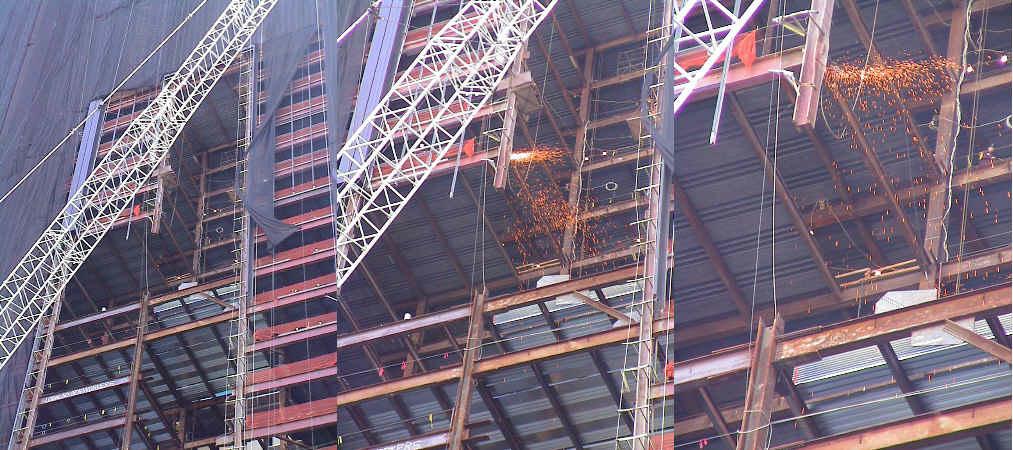
Updated 14 December 2004
Deutsche Bank Building web site:
http://www.renewnyc.org/plan_des_dev/130Liberty/default.asp
Add New York Times report, December 14, 2004.
Add Fresh Kills WTC Debris Forensic Site comparative photos.
12 December 2004
Saving WTC
Historical archives which misrepresent events are a bane and no doubt some might want to preserve banes if they concretize falsity as truth.
The erasure of the WTC evidence is a mighty example of concocting archives, called architectural renewal, which accelerates and institutionalizes a saccharine version of the dreadful event.
Historic preservationists have failed to rise to the occasion to save crucial evidence of the historic event, and some among them are pursuing opportunities to cash in on the falsehood being planned.
We spoke with several pros in the NYC preservation field on Friday and asked what should be done, for example, to save the Deutsche Bank high-rise, gapingly wounded, as the sole remaining architectural artifact. It has been declared a toxic hazard and authorities assert it must be demolished to rid the neighborhood of the threat. But every significant structure which becomes worthy of preservation is called worthless, a hazard, an eyesore, a barrier to progress, an embarassment, and worse.
| Deutsche Bank in 3 October 2001, left, and in May 2003, right.
|
| Deutsche Bank Undergoing Temporary Repairs on the Facade Gash, October
2003.
|
| Cryptome photos. |
One person said the Germans blew up the crematoria at Auschwitz to erase the horror. But the ruins are now being promoted as an essential record of what should never be erased.
Ruins are what's missing at WTC, and visitors continue to lament their lack, and express shock that there's nothing to see there except the usual banalities of development, kitschly decorated and celebrated.
The use of competitions and famously obsequious architects to gloss the WTC erasure is disgusting but characteristic of urban renewalists, whether new urbanists, modernist, corporatist, avant-garde or weeping survivors. "We have to heal, to move on," is their post-card mantra. But that is also the language of those who want to deny culpability, particularly those who failed to prevent 9/11 but now rush to cash in on it, Giuliani and Kerik avarice the rule not exceptions in promoting shoddy, expensive homeland security a la mode national security.
Occasionally, historic preservation takes on the powerful, indeed that was its appeal to some early adherents, me (John Young) among them, but not much lately, as it has become a lucrative profession and joins the other professions in sucking up to, glamorizing power.
At our discussion of mounting an initiative to take back WTC from its erstwhile predators there was doubt much could be done, but there was a moment of dreamy excitement about how it used to be before maturing into compliant adults chasing contracts and fees and reputability.
The WTC archives are totally corrupt, almost, at least as far as architecture and planning are concerned. But as ever with trustworthy historic presevation, the vital data which can galvanize a public initiative to reclaim the built environment from its predators is not found in architectural archives but in those repositories hardly ever examined by designers.
Cryptome has been photographing WTC since mid-October 2001, documenting the remnants as they disappear along with the banal reconstruction and designs for much more, and there are people in other than design and planning fields gathering data as well. From such collections there is more than enough information to challenge the flood coming out of the established urban predators. It would have to be assembled for public presentation in a way that circumvents the exculpatory Guiliani-Bush-LMDC-PA-Pataki-Bribe Families-PR hegemon.
Still, saving WTC is sufficiently hopeless to make it vastly appealing as a design, planning and public education project. There are tons of remnants awaiting return to public consciousness and appreciation, out of the celebrated and decorated burial grounds to which the incriminating evidence was sent so fast it makes your head swoon as if reading the 911 Commission Great American Novel.
| Photos of WTC on 3 October 2001, left, and May 2003, right. |
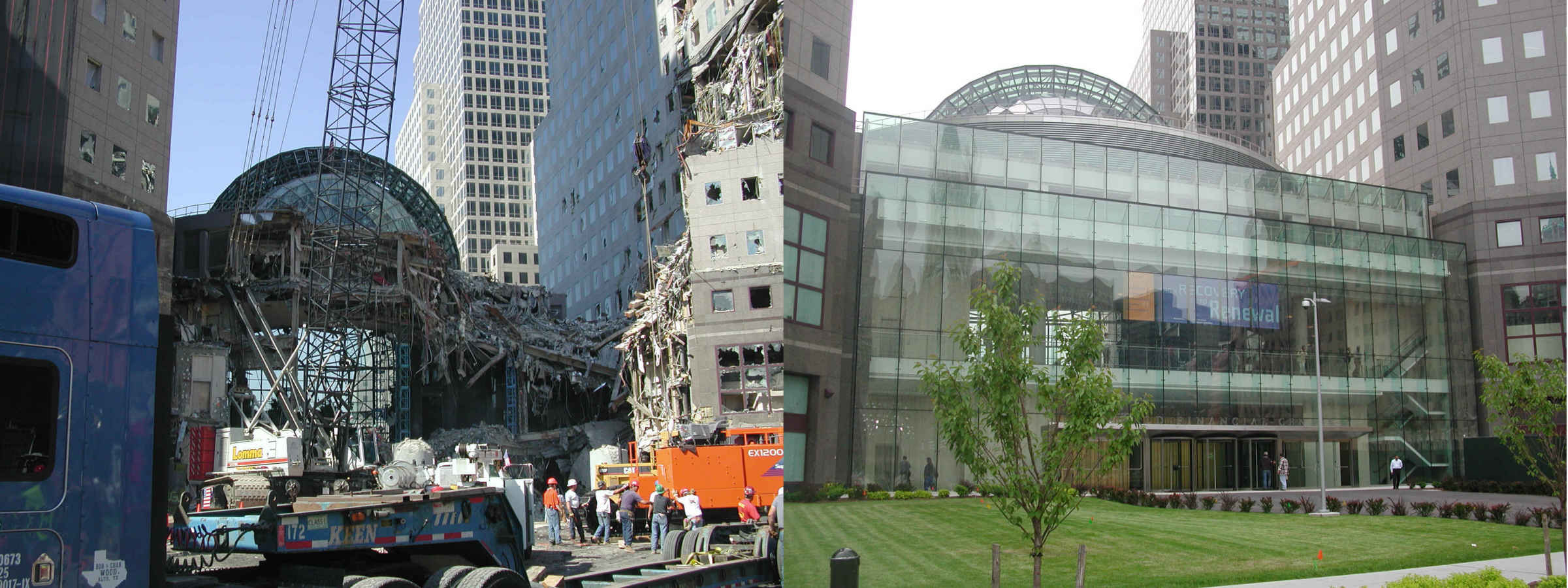 |
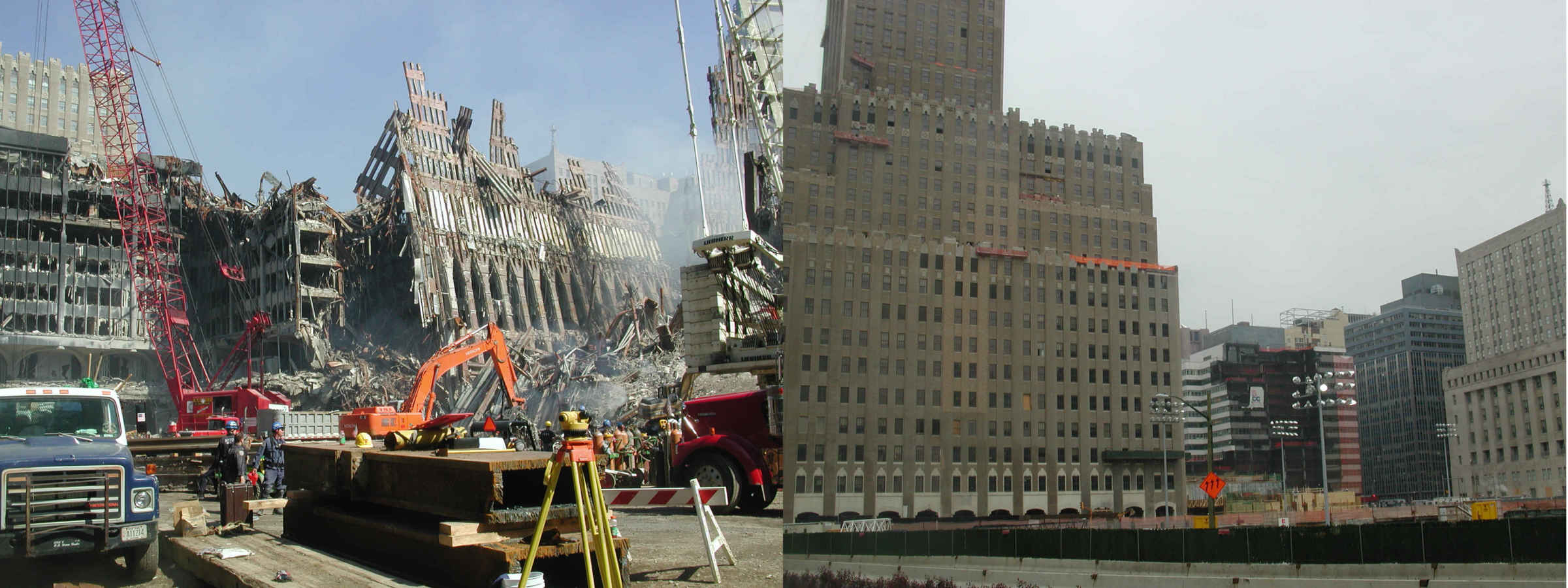 |
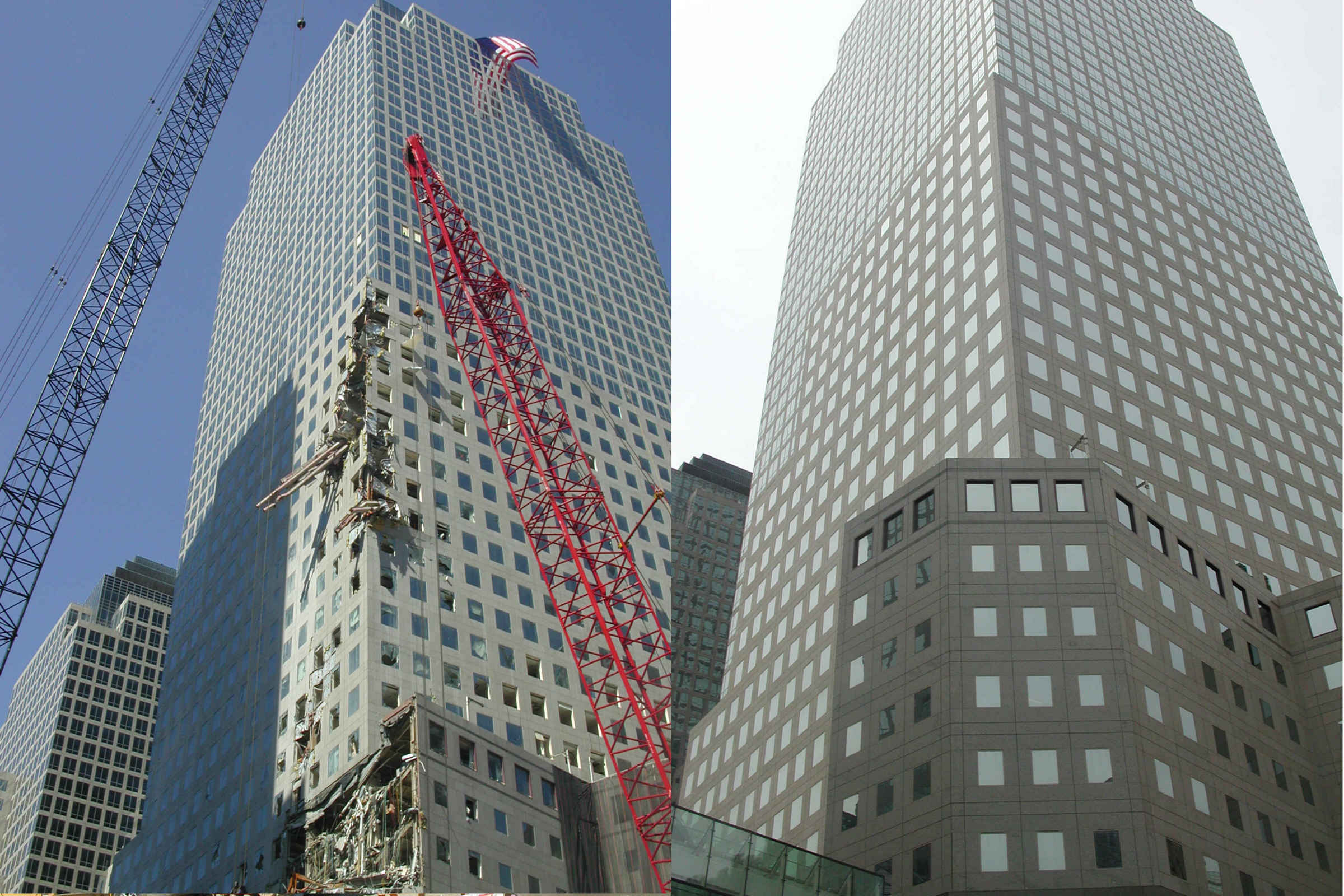 |
 |
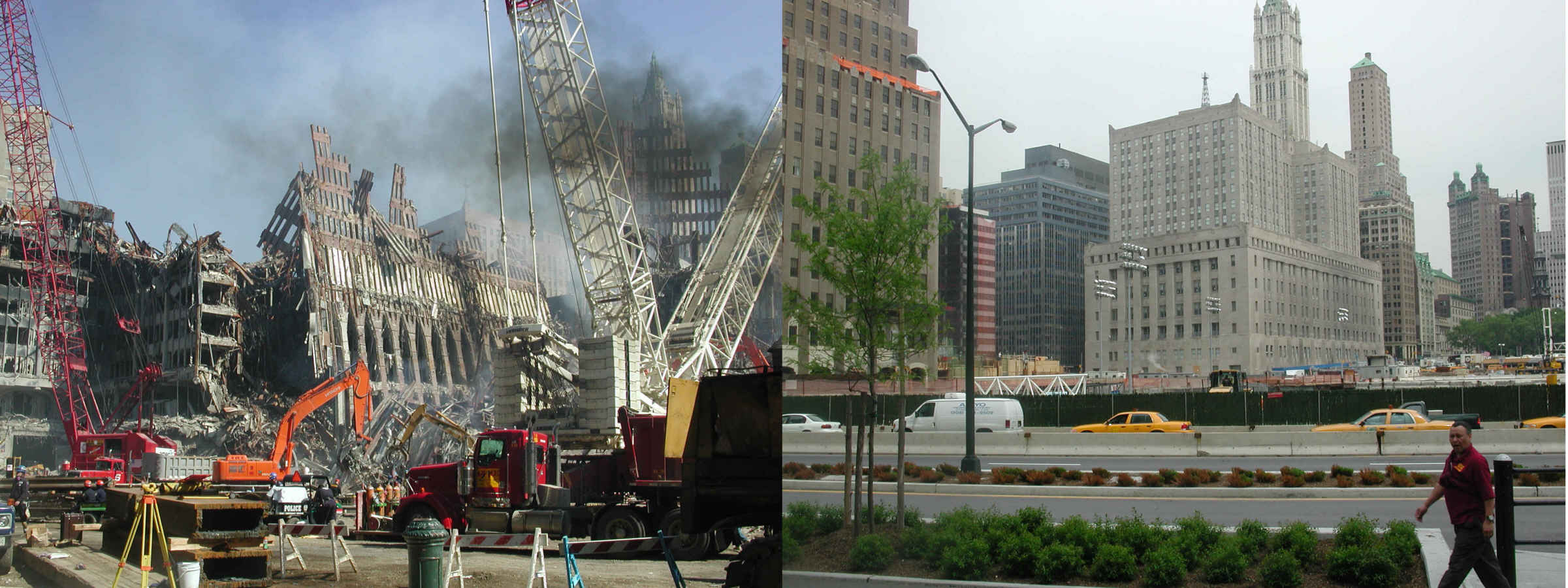 |
 |
 |
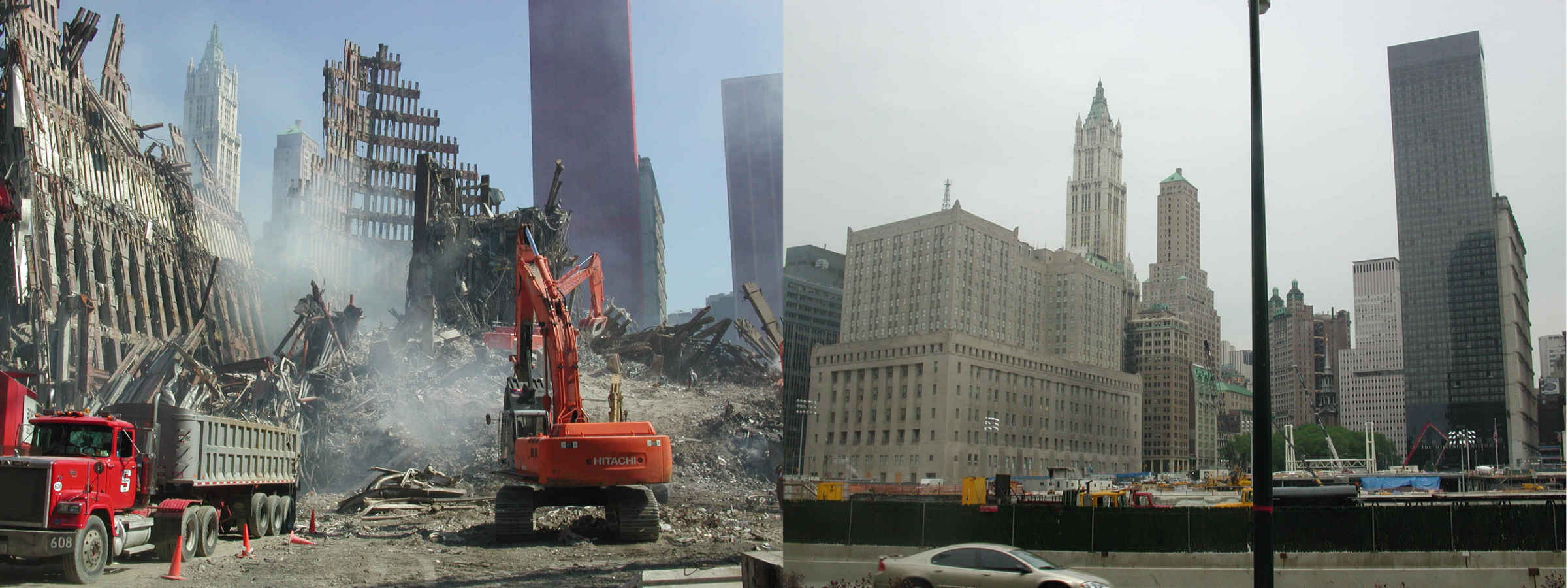 |
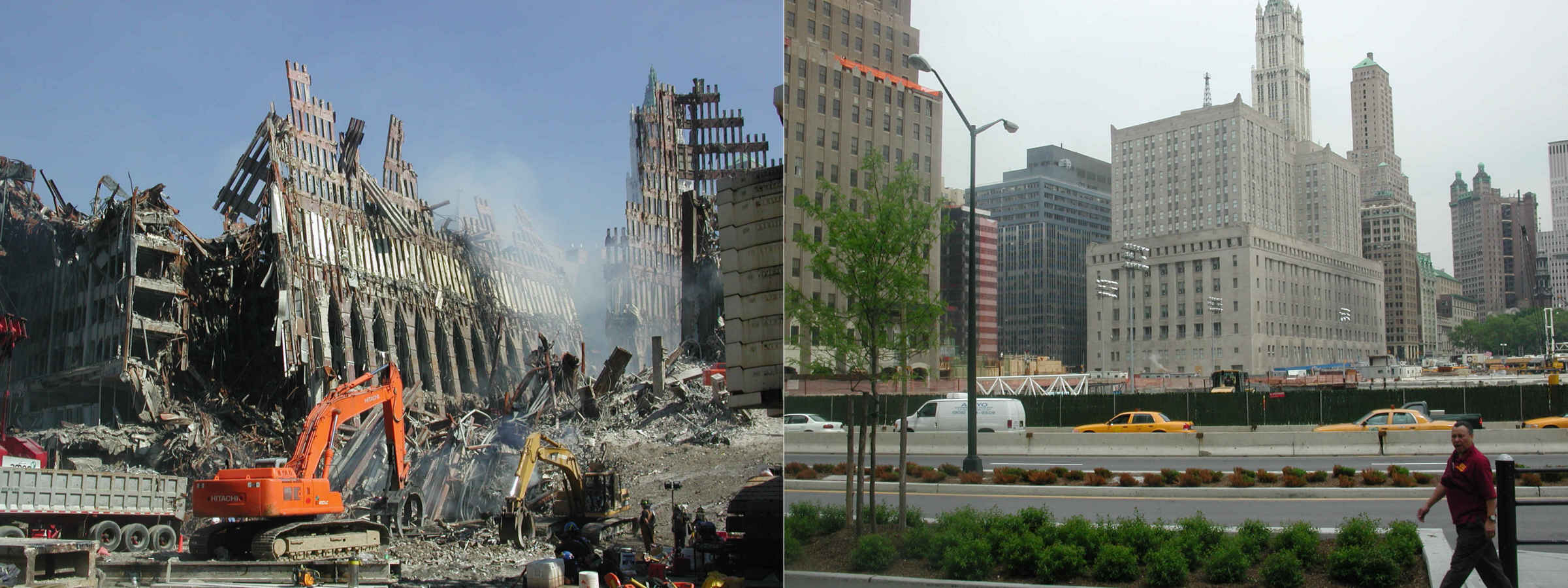 |
| Cryptome photos. |
| WTC Debris Forensic Site, Fresh Kills Landfill, Staten Island,
NY. Left four from helicopter, January 2002; Aerial, right, showing cleared forensic site, June 2003 . |
 |
| Cryptome photos four at left, Getmapping.co.uk aerial at right |
New York Times report, December 14, 2004:
http://www.nytimes.com/2004/12/14/nyregion/14rebuild.html
By DAVID W. DUNLAP
Before the shrouded Deutsche Bank tower opposite ground zero can be taken down, it must first be stripped to its structural bones; cleaned of materials that contain asbestos, World Trade Center dust and other potentially hazardous contaminants.
What that means is emptying 40 floors of ceiling tiles, gypsum wallboard, carpeting, sprayed-on fireproofing, fiberglass insulation, bathroom fixtures, built-in cabinetry. It includes taking down the netting that now covers large parts of the tower and erecting the crane that will be used in dismantling the steel framework.
It will also mean a journey back in time to Sept. 11, 2001, when the tower was pierced by a huge section of the collapsing 2 World Trade Center and filled with debris through 1,500 broken windows. Much of the building has remained largely untouched since then behind protective barriers.
Yesterday, the Lower Manhattan Development Corporation, which now owns the tower, and the Gilbane Building Company, which has been hired to tear it down, released a draft plan for the first phase of deconstruction. It was distributed for comments to government regulators and Community Board 1 in Lower Manhattan and was also to be posted on the corporation's Web site, www.renewnyc.com.
"We look forward to hearing the public's concerns," said Kevin M. Rampe, the president of the development corporation.
The plan calls first for the removal of dust and the collection of contaminated materials by workers in protective gear, beginning at the top of the building and working down, with four-floor sections of the tower isolated at any time under "negative pressure." Exhaust systems within these areas will make the air pressure lower than it is outside, so that if the protective barriers develop a leak, contaminated air will not be expelled.
Dust and contaminated materials are to be gathered with plastic shovels and dustpans, then placed into waste bags for disposal. The bags are to be at least 6 mils thick (garbage bags for kitchen use are typically about 1 mil or less). Items that cannot be bagged are to be wrapped in 6-mil plastic sheets.
No more than 30 cubic yards of waste can be stored on the site, and the plan notes that "continual waste transport for disposal will likely be necessary." Asbestos-containing materials are to be disposed of in a landfill, five of which are identified in the plan as possibilities. Four are in Pennsylvania: Newburgh, Imperial, Morrisville and Tullytown. The other is in Bridgeport, W.Va.
Assembly Speaker Sheldon Silver, whose district includes much of Lower Manhattan, was attending a meeting of the state's electoral college delegation yesterday and had not yet reviewed the plan.
However, a spokeswoman, Eileen Larrabee, said on his behalf, "This is an urgent community concern, and the L.M.D.C. must establish a widespread system to provide vital emergency and evacuation information quickly and efficiently."
Amy Peterson, a senior vice president of the corporation, said that in events not severe enough for the Police and Fire Departments to take charge, neighbors would be notified through phone trees, e-mail messages, fliers and meetings.